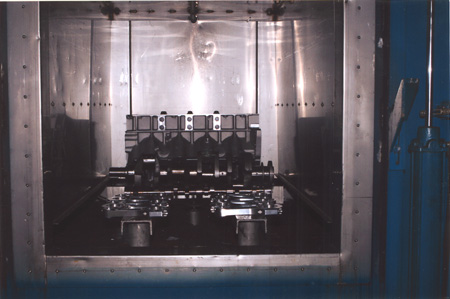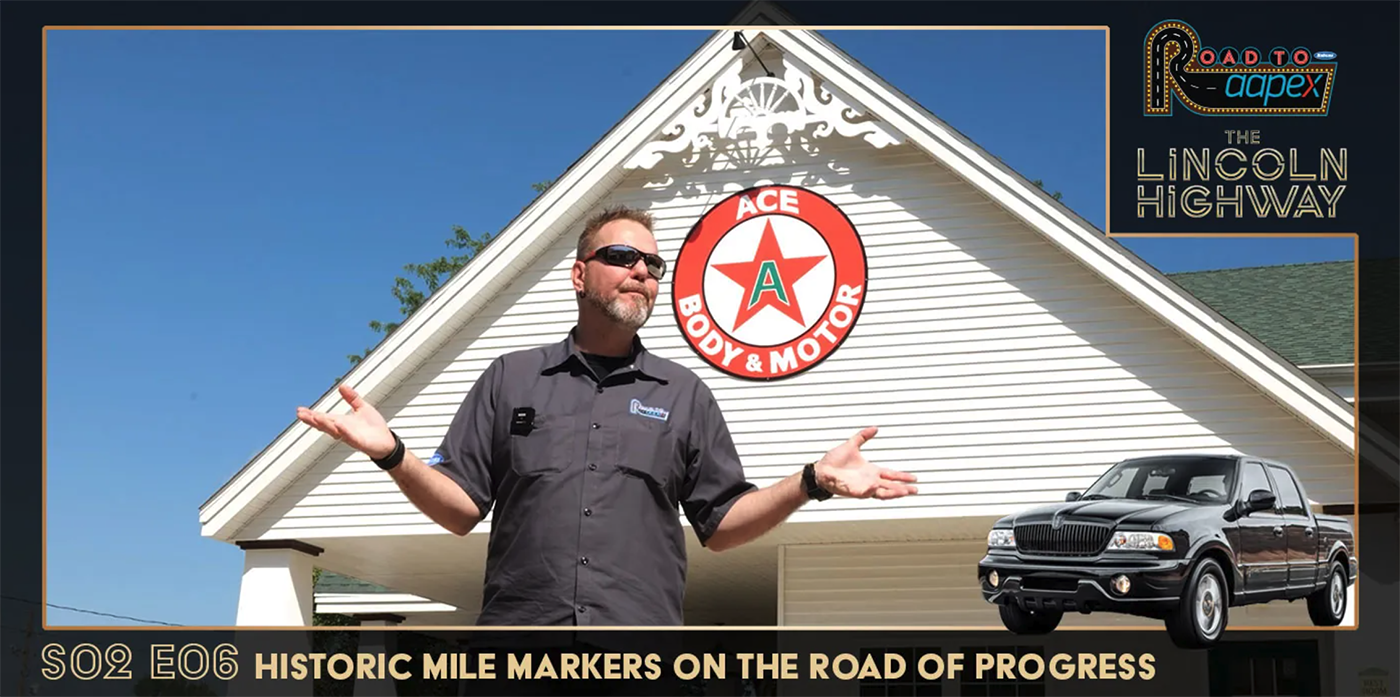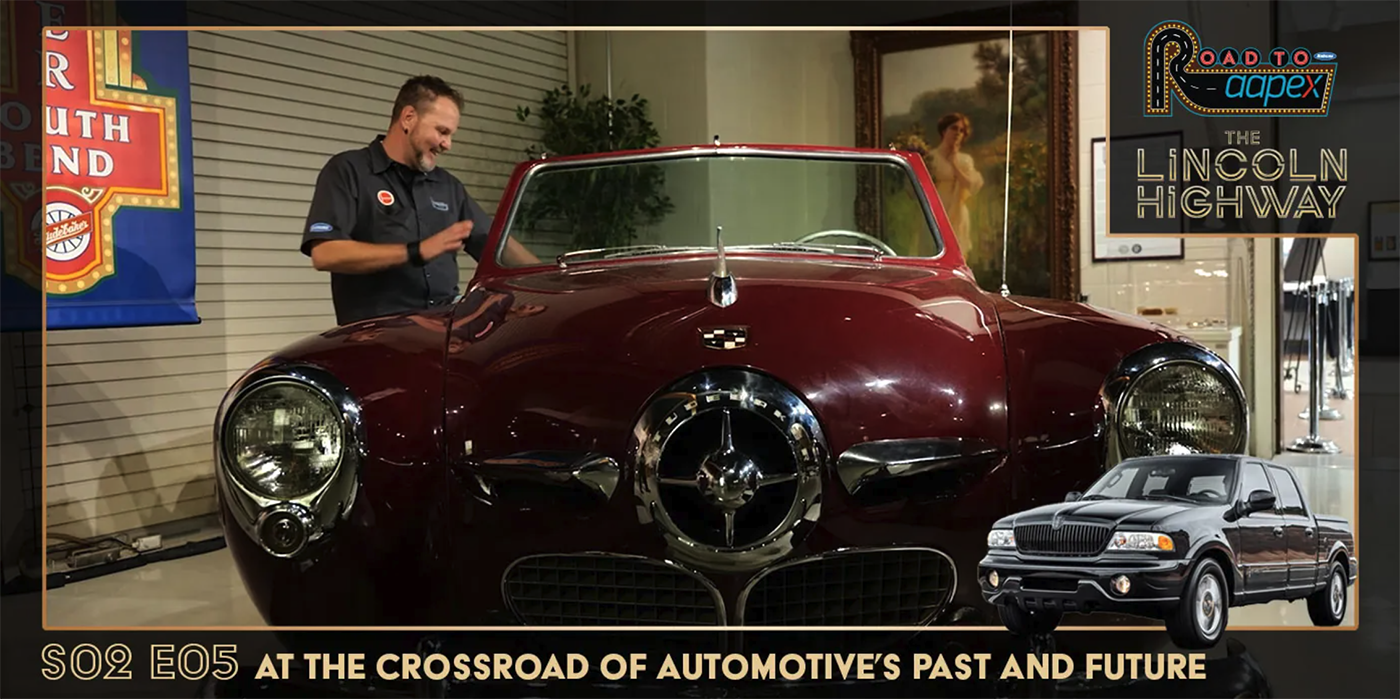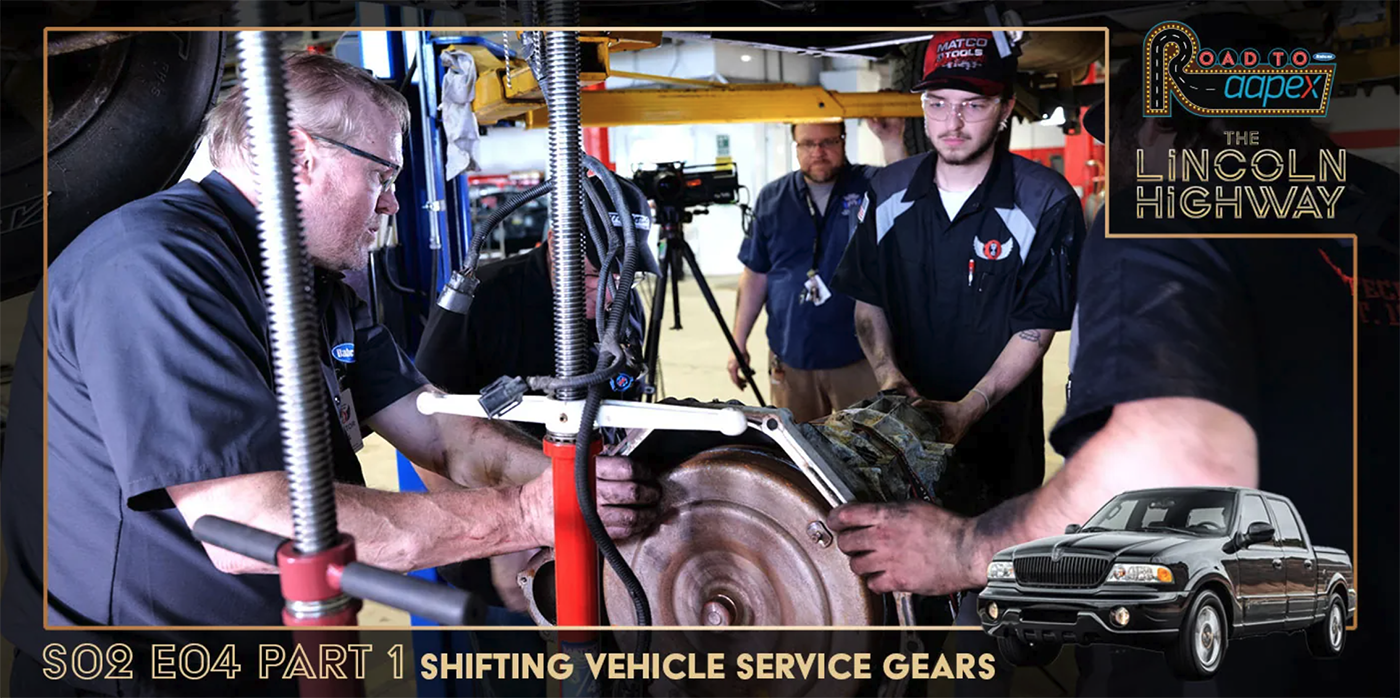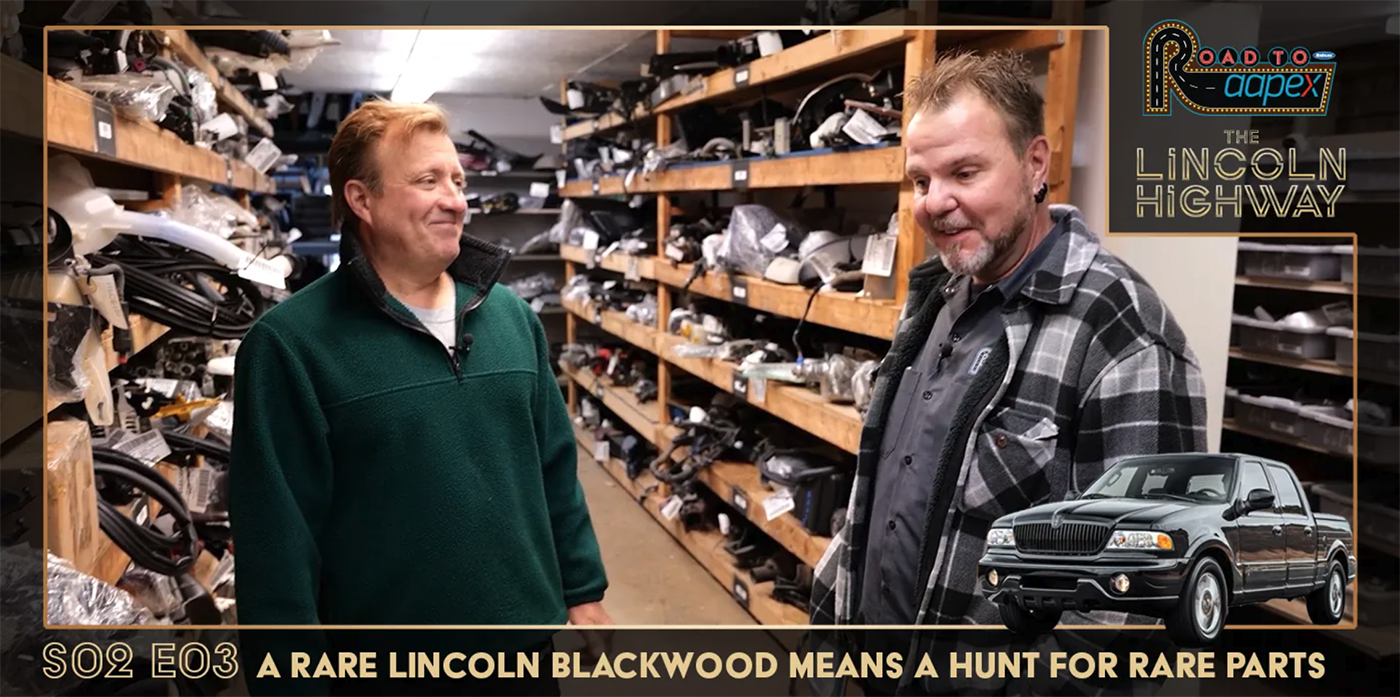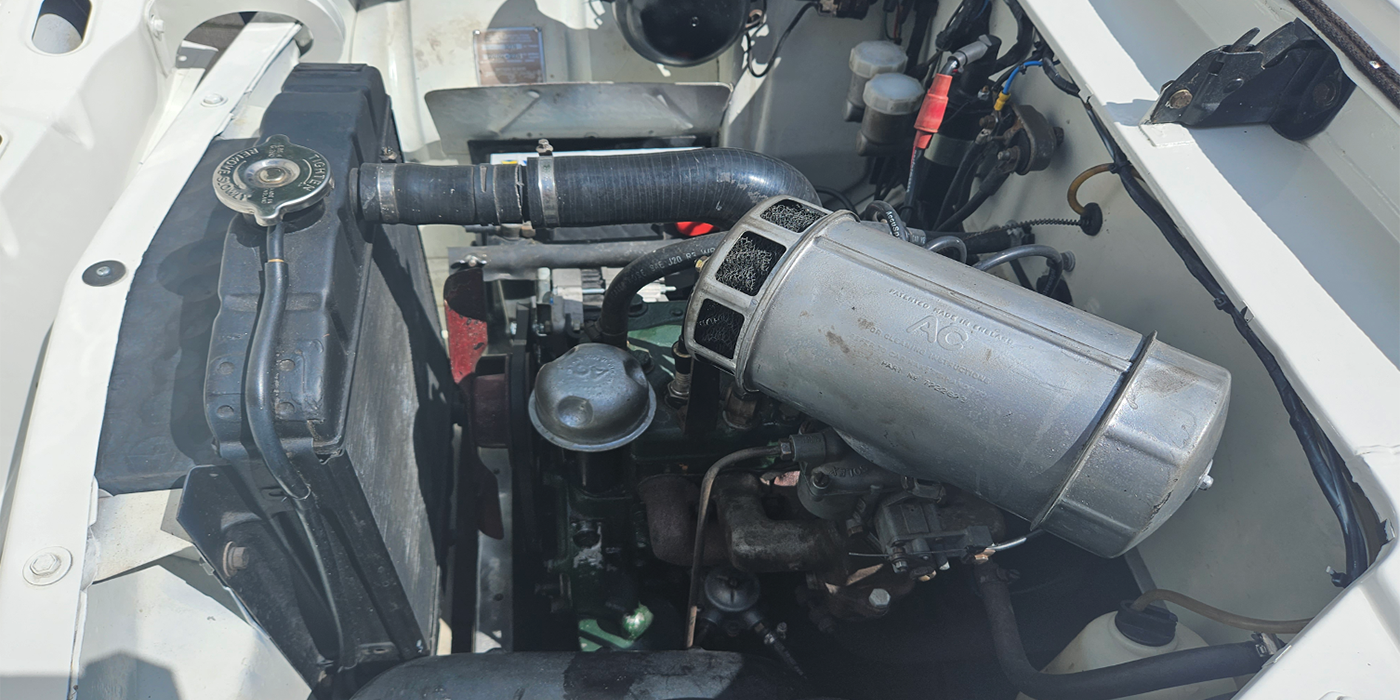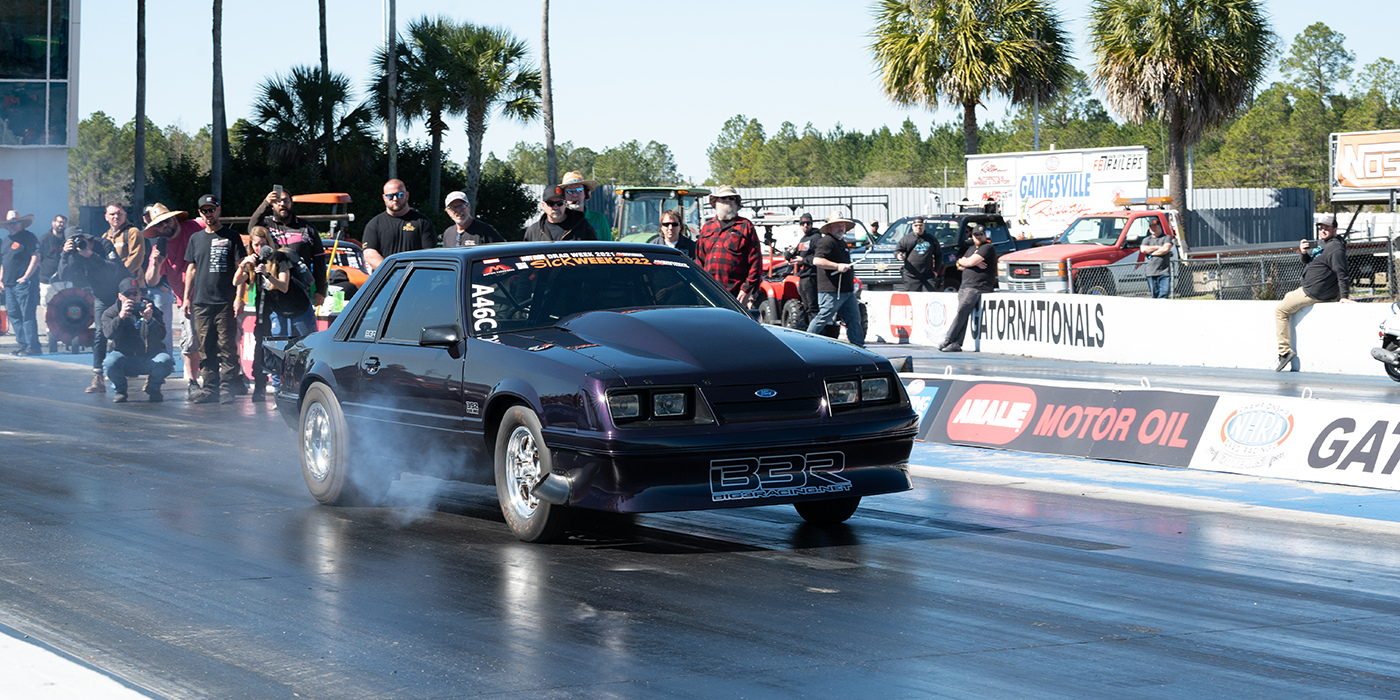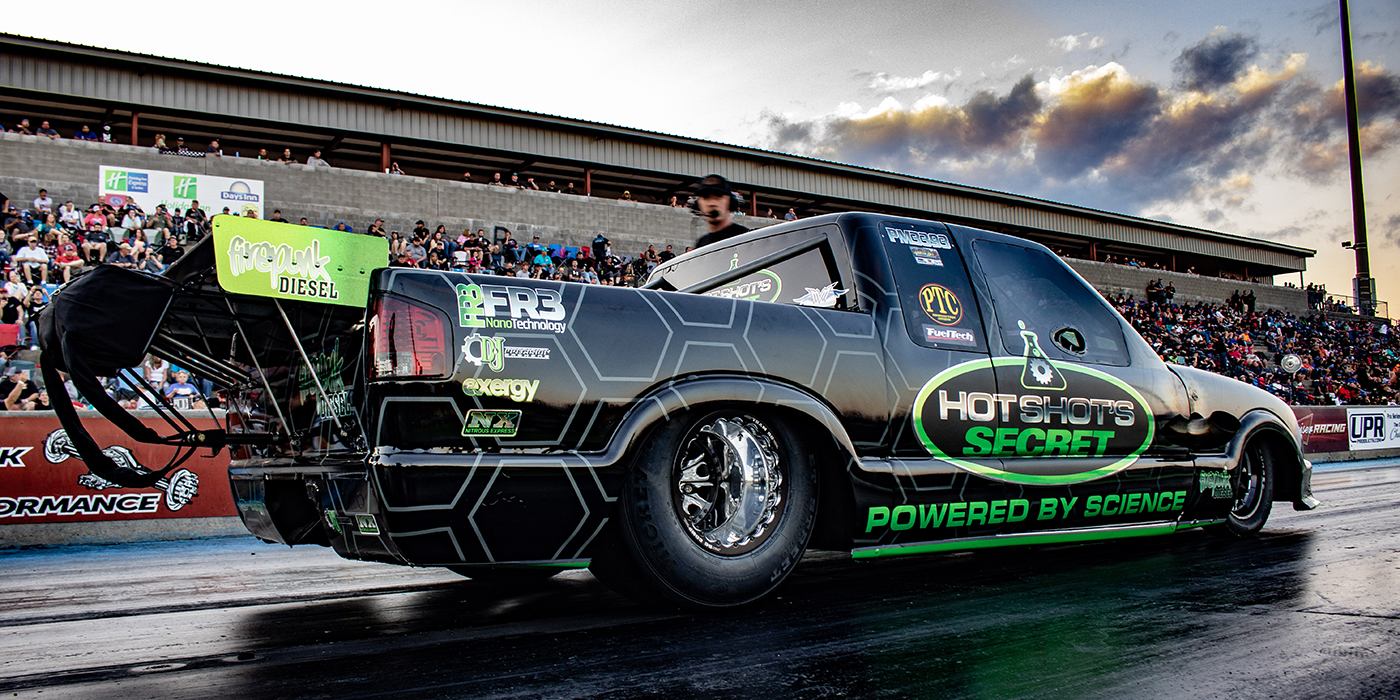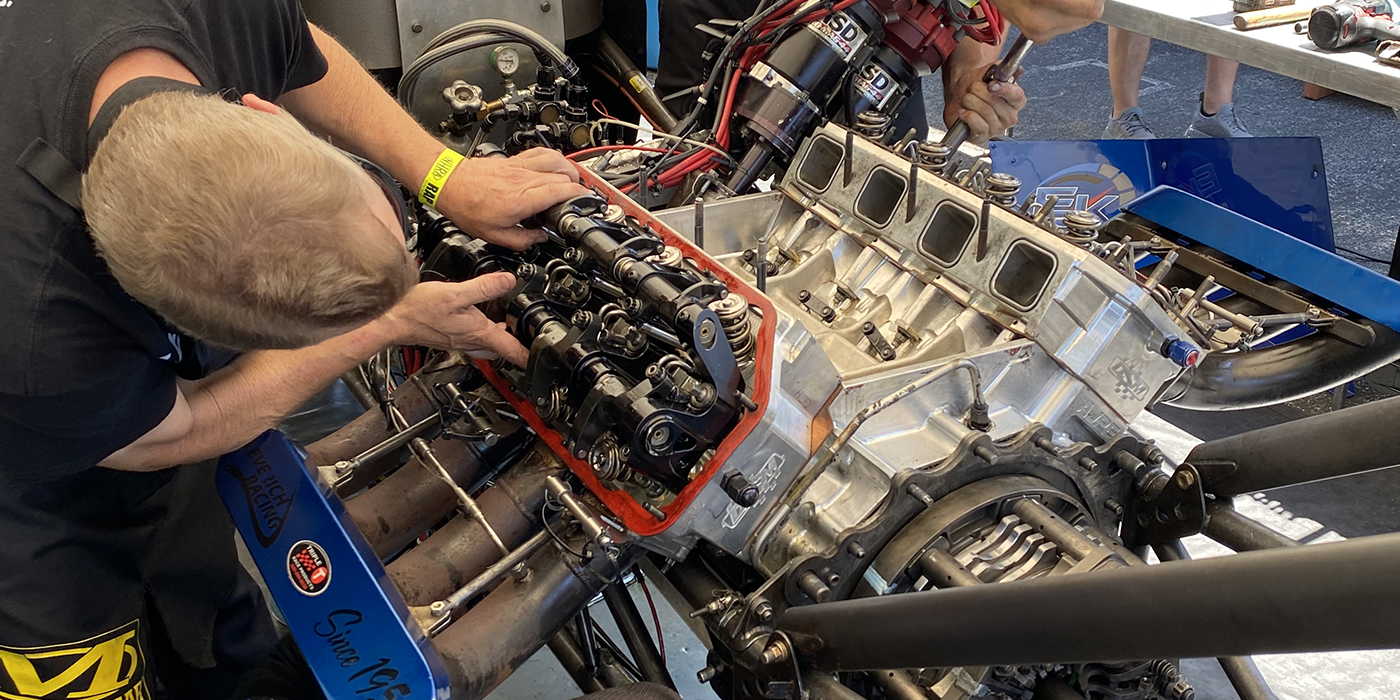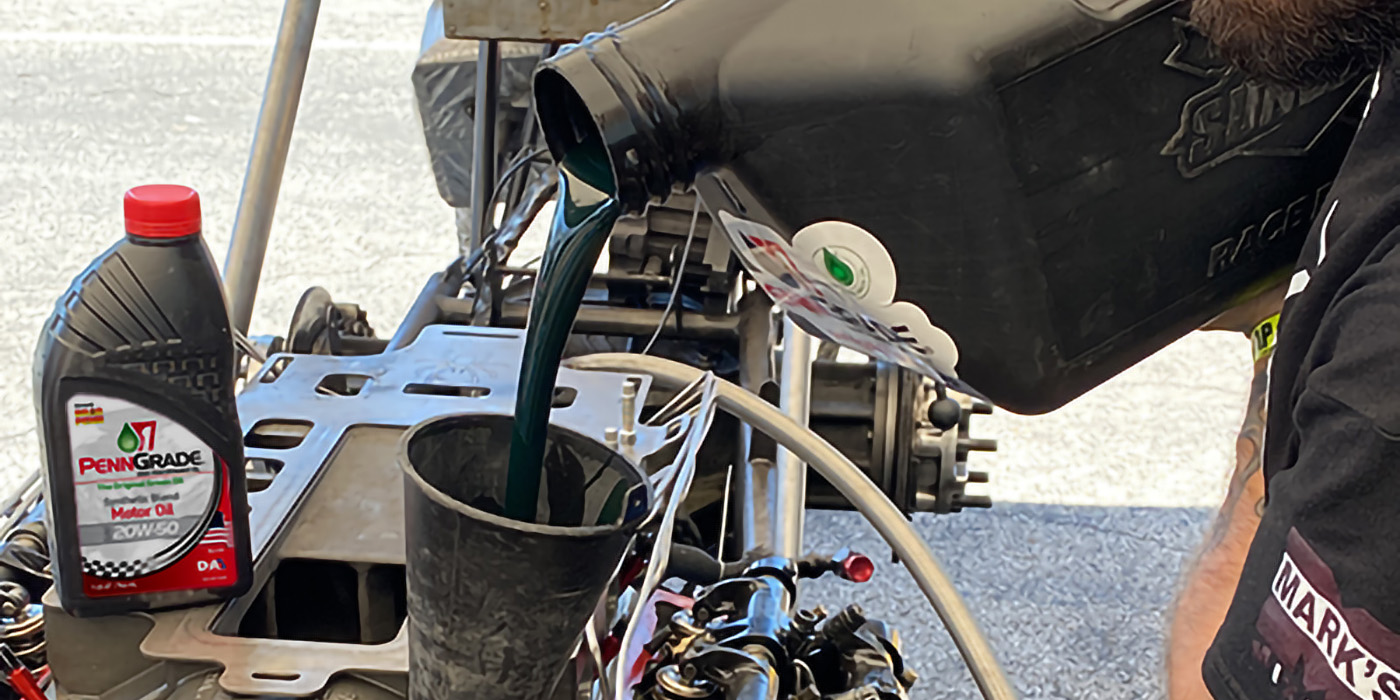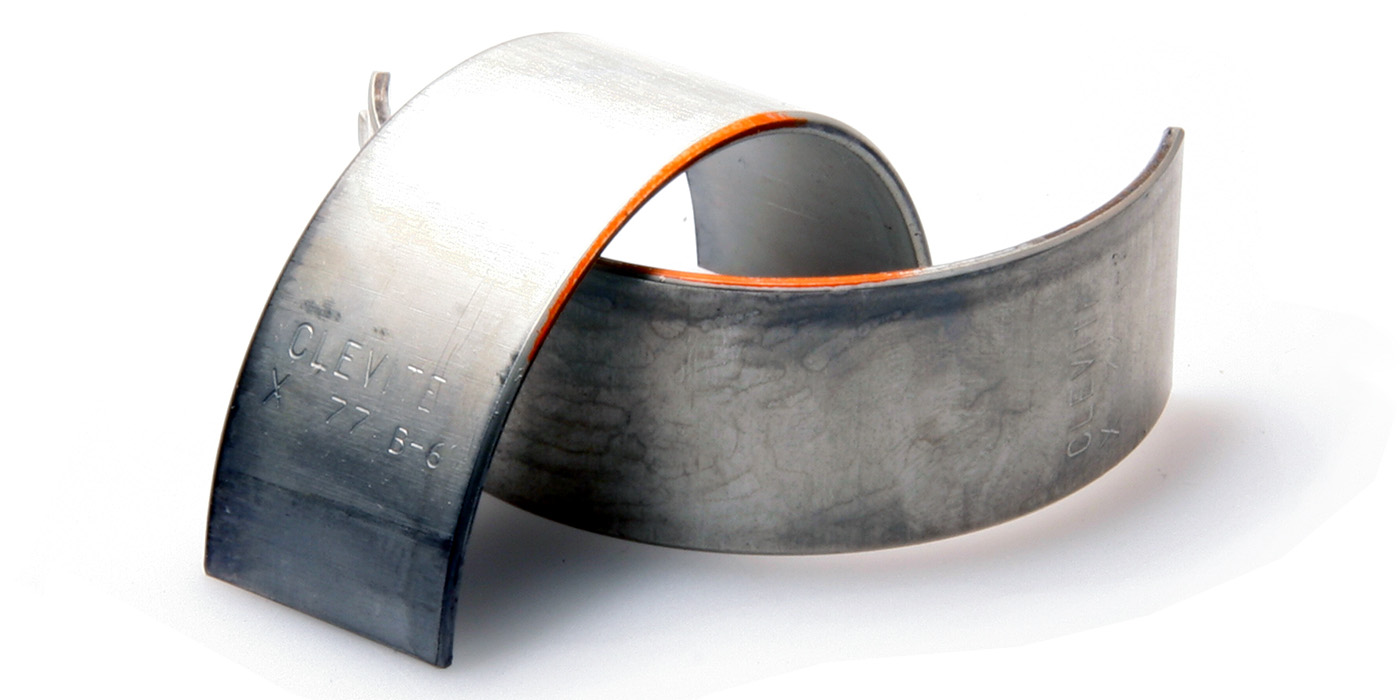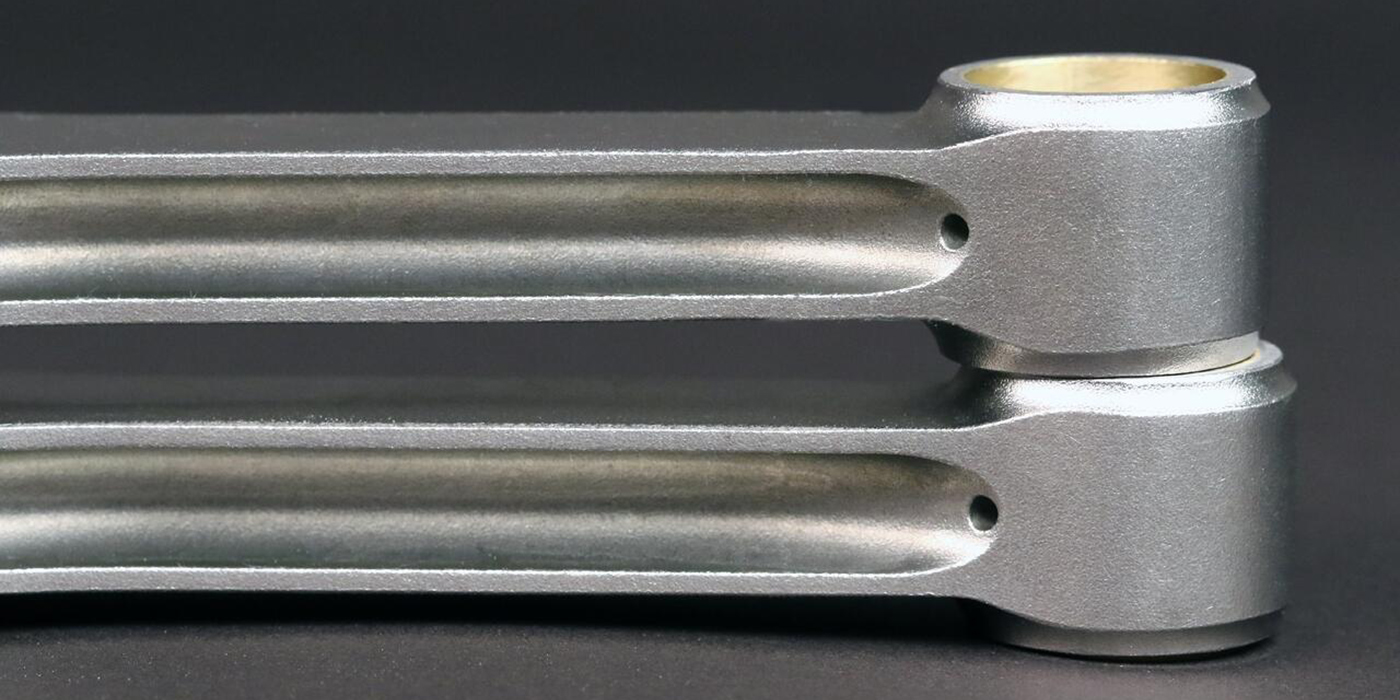While cryogenics – the technology for producing and using cold in a variety of ways – saw significant achievements in technology and applications in the latter half of the twentieth century?(and continuing, of course, today), scientists have been developing ways to make things colder and colder since the late 1800s.
The successful process of liquifying oxygen, hydrogen, nitrogen and helium as well as other gases not only spurred our modern refrigeration and air conditioning industries, but were the first steps in what we consider today to be a popular – if misunderstood – procedure.
Cryogenics is similar to heat treating in that the metal is strengthened, but it is not made harder by the process, just more durable. Cryogenic processing involves lowering the temperature of metal engine components to more than -300° F. This cooling process apparently rearranges the crystals within the metal, realigning the atomic structure and relieving stress.
According to Ryan Taylor, from the Cryogenics Institute of New England, while the process is proven, there is still a level of awareness that skeptics and potential customers alike must understand to realize the procedure isn’t “snake oil.”
“You’ll see three major things that cryogenics will do for you,” Taylor explains:
1. Residual Stress Relief. “Basically, if the parts have residual stress (which is introduced into the metal during casting, cutting, welding, grinding and boring) after heat treating, cryogenics will further relieve that stress,” Taylor says. “Honestly, heat treating does the majority of the work, but usually there’s about 10 percent stress still in the metal parts.”
2. Uniformity of the crystalline or micrograin structure of the metal. When a piece of steel or cast iron is hardened, it is heated up into a range where the atoms of iron and the atoms of carbon form a particular type of crystal called austenite. This has a relatively soft grain structure with weak points. The cryogenic process causes this austenite to change to the more wear-resistant, yet more brittle martensite, which presents a more even crystalline structure.
“Heat treatment going up to about 1,500° F removes some of the austenite but you have 10-15 percent retained austenite in the metal. These are literally voids and imperfections in the metal, and once they are converted to martensite, it leaves the metal with only 1 percent austenite. This gives a tougher, more durable metal without any imperfections,” Taylor explains.
3. Precipitation of Eta carbides. Taylor says this process is less well understood than the others. Basically, after cryogenic treatment of steel, you’ll find eta carbides, which are wear resistant properties within the metal. More Eta carbides give increased wear resistance. “This is an anomaly that scientists have theories about but haven’t been able to really explain,”?he says. “However tests have been conducted to prove it happens.”
Basically, how cryogenic treatment works is this: engine blocks, pistons, crankshafts or any other component is placed into a cryogenic treatment chamber. The chamber is sealed, and the temperature is then slowly lowered to -320° F using liquid nitrogen. The subfreezing condition is maintained for several hours; then the temperature is carefully and slowly raised again. Many materials then require a heat tempering cycle, so the temperature is raised even higher and then returned to ambient. These cycles may be repeated as needed.
Precise control of these processes is critical, and the computerized chambers must remain sealed during the cycles. To properly treat components may take from several hours to many days, after which the treated parts are stronger and more structurally stable.
Today’s treatment methods, which use liquid nitrogen flashed to vapor and computer-controlled dispersal systems, use no liquid in the treatment chamber, so parts are treated gently and completely.
But while cryogenics works with severe cold, the truth is, it’s actually an extension of the heat treating process. “We originally got into cryo treating parts about 15 years ago as a complement to our heat treating capabilities,” explains Dan Gathman of Elgin Industries. “We found that when used as an ‘after-treatment treatment’ it fixed some of the mistakes made during heat treating.”
A key component of the heat treating process is, of course, the cooling stage. As parts return to room temperature they develop their desired microstructure. However, certain high strength steels require very tight atmospheric control during the heat treating process, says Gathman. “If, for example, the atmosphere runs a little too rich, the part will not fully harden at room temperature. So the further you go the better it gets.”
It’s an extension of the process, concurs Bob Reed of 300 Below. “Cryogenic treatment does not take the place of heat treatment, rather, it completes what the heat treater started. When heat treating, the temperature is increased to the proper ‘high’ temperature for the type of metal being treated. At the correct time, the parts being heat-treated are put in ‘the quench,’ at which time the temperature begins to decrease. It is during the quench that the improvement actually takes place. Parts become cooler and cooler, and better and better. The heat treater considers the treatment completed when the temperature of the parts reach room temperature.”
Heat treatment is great, but there is nothing magical about room temperature, says Reed. It is at this time that the heat treated parts can be cryogenically treated, because when cryogenic treatment is properly performed, cryogenic treatment begins at room temperature, and through computer-control drops at the rate of one degree per minute until the temperature reaches 300° F.
Small drill bits, sewing machine needles and guitar strings can be cryogenically treated at the same time as big engine blocks, gears, pumps, etc., but the treatment time must be based on the biggest, thickest cross-section. In other words, cryogenic treatment is not a surface treatment. The entire thickness is treated and receives the benefit which is normally improved performance, reduced wear and breakage, longer between rebuilds or replacement, reduced costs, and (hopefully) a more successful motorsports season.
While nearly all engine parts are candidates for cryogenic treatment, how they respond under stressful racing conditions will vary. Typically, though, piston rings will seal better against treated cylinder walls, reducing blow-by and increasing horsepower. Blocks will not distort from overheating and vibration. Valve springs will last longer. Cranks and camshafts will be more resistant to contact fatigue.
Claims that cryogenically treated parts are indestructible or that a treated engine will not blow are, however, wishful thinking. According to experts, more than 75 percent of engine components fail because of fatigue. To the engine builder and racer alike, the benefits of this lengthy treatment process are three-fold: increased dimensional stability, stress relief and improved wear resistance.
As part of its core competency, Elgin Industries offers nine different types of commercial heat treating options, including cryogenics. While it has not advertised it to the “man on the street,” Elgin’s national sales and marketing manager Rick Simko says his company has provided the service for certain race teams.
“Let’s face it – it’s not an inexpensive process. We’ve treated blocks and other parts for certain teams we’ve sponsored, the normal guy isn’t likely to want to spend the money with us for it unless he knows what he’s getting,” Simko says.
In order to make the cryogenic process accessible to racers who might not have the budget of bigger teams, Elgin has introduced a new line of cryogenically treated parts. Named Black Ice, the line includes camshafts, pushrods, rocker arms, valves, valve springs and timing components. “As far as we know, we’re the first to offer a line of pre-cryo treated parts in the aftermarket,” explains Simko. “Others treat parts and offer the service, but we think this is a great niche to give our customers the engine builders a step up on their competition.”
Cryogenic treatment is not a coating, nor is it a simple surface finish that can simply be “machined out.” The computerized treatment process ensures that the thickest cross-section of the metal is treated – in other words, the entire volume of the metal is structurally changed throughout. As such, a certain amount of machining can be done after the parts are treated.
Stress Relieving
Stress relieving is another way to stabilize metal components. However, stress relieving doesn’t change the metal’s properties in the same way as other softening processes like full annealing or normalizing. Metal components can be stress relieved by heating to a specific temperature that is lower than the temperature to anneal or normalize the part. This process is typically used on materials and components that have been stressed during fabrication.
As previously described, many heat treatment and welding processes create stress in the metal, which can lead to warpage after the heat-treating process or during subsequent machining operations. You should pay extra attention to weldments and the stresses that are induced by welding. In many cases, you should stress relieve a weldment that is to be machined because if you remove stressed material it will redistribute internal stress and may cause the part to warp.
Another form of stress relieving is natural – seasoning is, basically, the process of doing nothing. Leave a block, head or other component alone for a couple of years and it will relax and the metal’s structure will become stable.
Of course, what works with a bunch of metal won’t cause the same reaction in humans. Leaving a perfectly good engine block to “rest” for two years will drive an engine builder crazy, so alternative methods are available for this as well.
“Inducing stress relief via vibration is a proven method,” says Tom Hebel, VP at Bonal. “The Meta-Lax process is, in effect, accelerated seasoning. Meta-Lax takes about 30-60 minutes to achieve what nature would need 1-2 years to do. From either process the result is a stable, crack resistant engine component.”
The Meta-Lax process vibrates a workpiece at its sub-harmonic energy level. The sub-harmonic zone is the optimum zone when using vibration. All metal structures exhibit harmonic and non-harmonic behavior. A metal component that contains thermal stress displays its harmonic curve as being out of phase from its natural frequency location, much like a musical instrument being out of tune. By applying sub-harmonic vibrational energy, the pockets of high stress concentrations are redistributed, thereby reducing the effects of thermal residual stress. Graphically, the harmonic curve shifts slightly but stabilizes into its natural frequency as the workpiece becomes relieved of thermal stress.
“The Meta-Lax system can be used with all types of materials such as low and medium carbon steel, tool steel, aluminum, stainless steel, cast iron and exotic metals like titanium, inconel, and stellite, which makes Meta-Lax ideal for valves and valve springs,” says Hebel.?“This process is also effective on parts that have been hardened without any fear of affecting the hardness or causing distortion, which makes it a real benefit for many engine components like cranks and cams.”
The process can also be used as weld conditioning, by relieving thermal stress as it is being induced during weld solidification. Metallurgically, a finer, more uniform weld grain results. Ductility and impact values are significantly higher, up to 400% and 75% respectively, which contribute to a dramatically increased fatigue life for those Meta-Lax weld conditioned parts. Additionally, weld conditioning can prevent up to 90% of the normal weld distortion, says Bonal.
Faith or Proof?
Faith, of course, is believing in what you can’t see. With these processes, do you really have to put your trust in the unknown?
“In order to build more engines you can advertise all you want but if you don’t win races the customers will go somewhere else,” said Keith Dorton, president of Automotive Specialists Racing Engines. Automotive Specialists is a small family business, which for more than 40 years has specialized in building successful racing engines for the oval track racing circuit including NASCAR and short track circuits. For more than 20 years, Dorton has used the Meta-Lax process.
Due to the brutal demands of the engines during a race fatigue failures on engine parts like blocks and heads, crankshafts, connecting rods, valves and valve springs, oil pans and exhaust headers can be a serious problem and Automotive Specialists wanted to extend the life of these parts. They also wanted to limit the number of engine rebuilds since the rebuilding process sometimes causes a substantial amount of distortion.
When he first looked at the technology, Dorton was skeptical since the results touted by Bonal seemed unrealistic.
“I decided to go into it with an open mind since we had a goal and needed help to achieve it,” said Dorton. “After a three-month study, we determined it was worthwhile to use Meta-Lax.”
Dorton says the results have spoken for themselves. “Overall, the Meta-Lax system has made our engines perform more consistent and longer than ever before,” said Dorton. “The system has certainly contributed to our reputation within the industry making it even stronger and more influential. That’s because over the past 20 years, using the Meta-Lax system has improved the overall success of our customers.”
Automotive Specialists’ customers have won races around the country – from Daytona to local dirt tracks. The numerous championships include Clay Rogers who won the 2006 Hooters ProCup Championship.
In the 10 years of the Hooters Division, Automotive Specialists has won 10 Engine Builder of the Year Awards and supplied engines to eight of the championship winners.
“We encourage people to measure their results based on comparison,” explains Hebel. “Because you can’t see the results of the process under a microscope, we tell them to test the differences by performance. There are real, measurable real-world differences we can see with the process. High-end power and horsepower output remains consistent and endurance is improved.”
Hebel acknowledges it may all sound too good to be true. “It does seem to be, and it’s actually been used against us,” he says. “The exciting thing is when people try it – they find it does work.”
It’s this repeatable proof that industry spokespeople say continues to be the missing piece to the puzzle for these invisible processes. “We’ve done these really great projects and seen amazing results,” says Taylor. “We have all these great customers who understand and believe in the technology. We have scientists, engineers, doctorates using the process…unfortunately, certain people want it to remain a secret. They make you sign non-disclosure agreements so you can’t talk about it. Really, what we need is to increase the awareness of it, taking the mystery out of it.”
Still, he acknowledges that the process is widely accepted. “We’ve seen some really neat things and we’ve certainly seen a much more focused consumer group. Many people continue to look at it from cost-savings standpoint. It really is money-saving in the long run.”